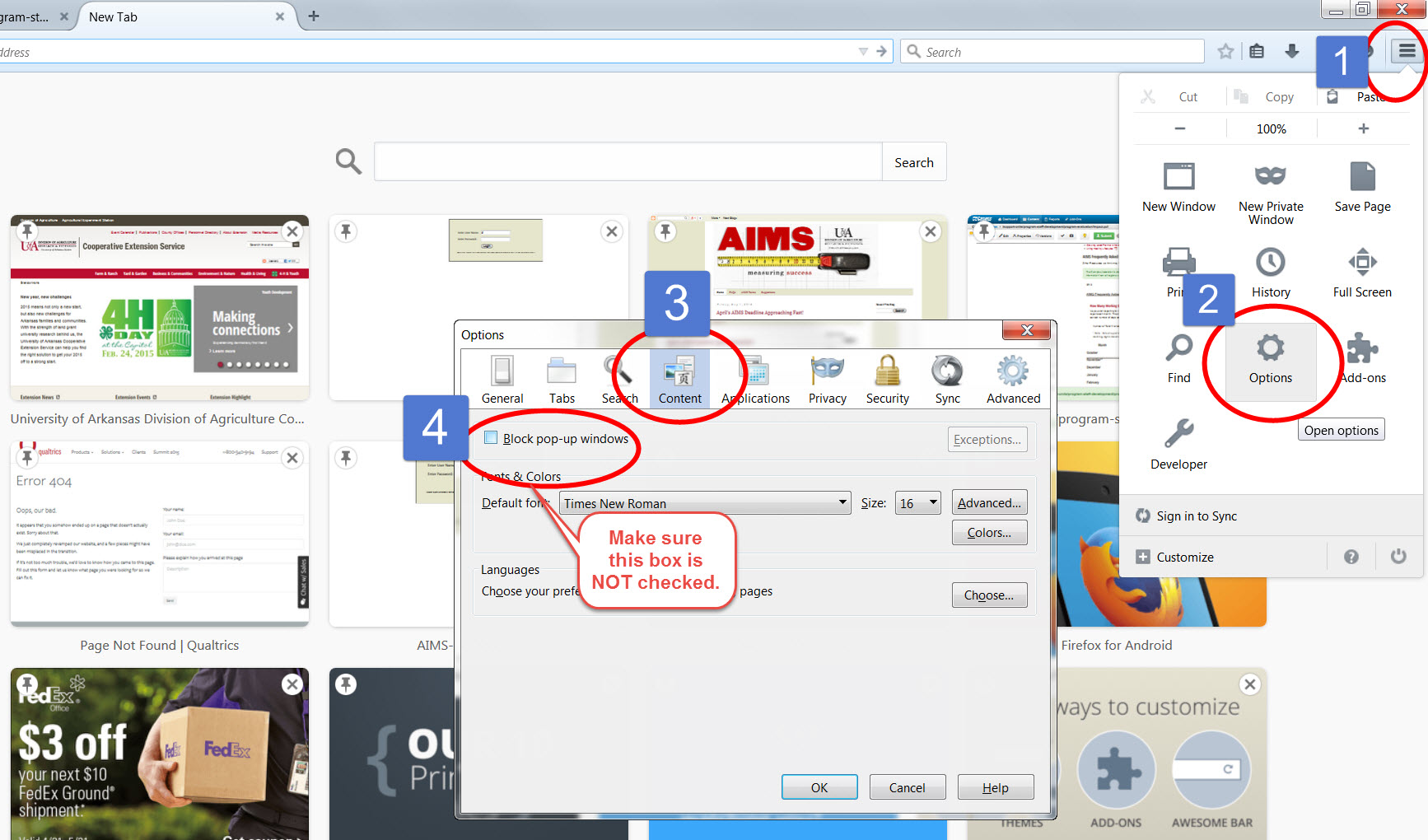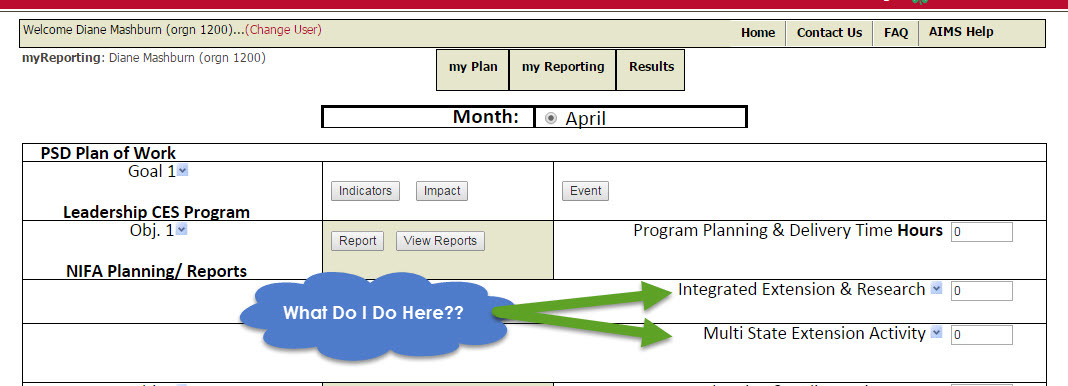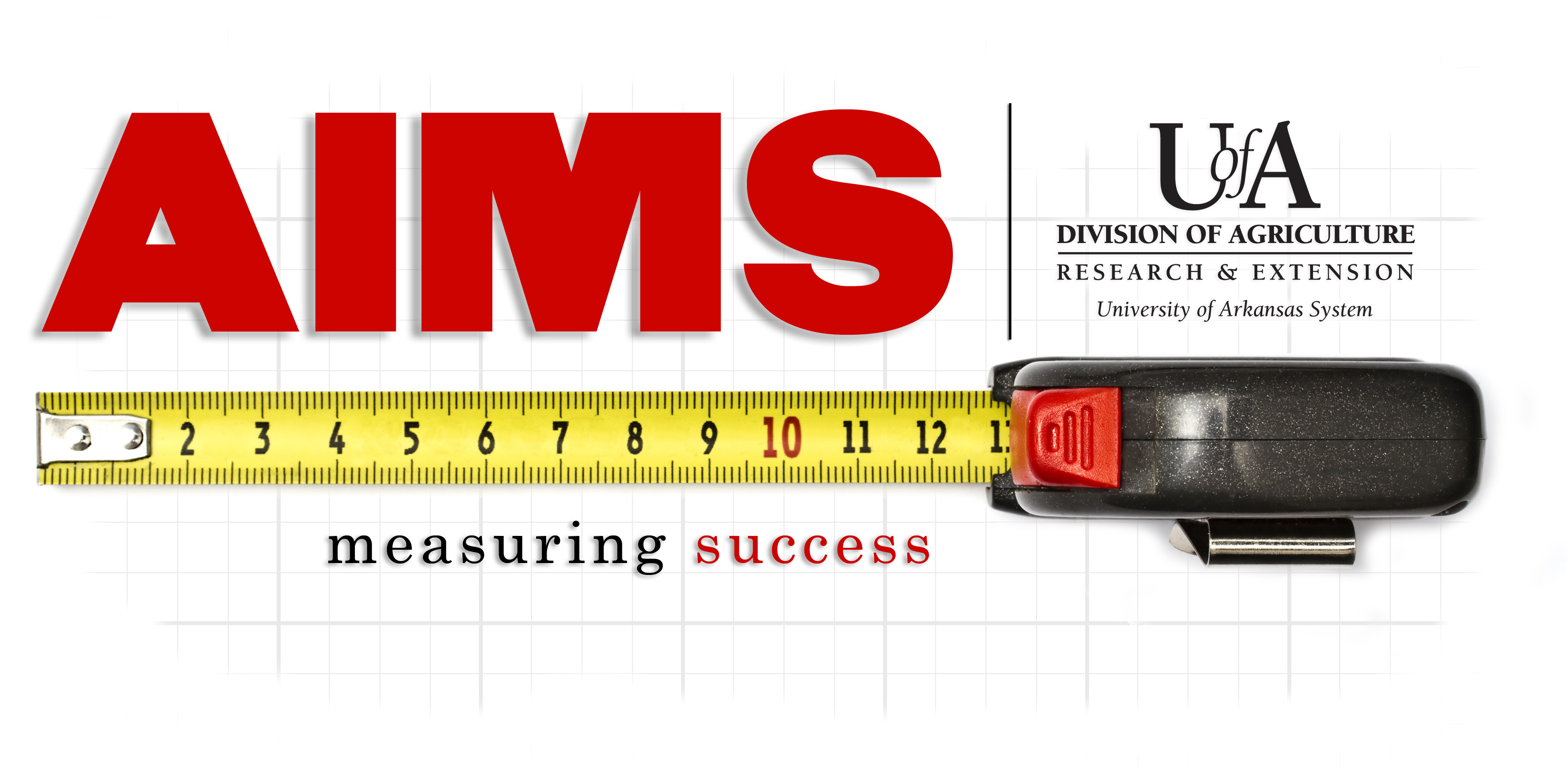AIMS & PEARS Help: Reporting & Impact
You will have access to AIMS until Jan. 30, 2026! Please pull all data/reports/etc. that you might need before that date.
Part of the program evaluation process is reporting our efforts and impacts. The following resources outline the reporting system for Arkansas Extension.
PEARS is Extension's new reporting system, beginning in January 2026.
PEARS Virtual Training Registration Link
PEARS Resources:
- PEARS Tracking Tool Tutorial
- PEARS Tracking Tool
- Tracking Tool-Direct Contacts
- Tracking Tool-Indirect Activities
- Tracking Tool-Program Activities 4-H
- Tracking Tool-Program Activities Non 4-H
- Tracking Tool-Quarterly Efforts
- AIMS to PEARS Directory
- AIMS-PEARS Guide
The Arkansas Information Management System (AIMS) is Extension's reporting web application. Data, such as time and contacts, are collected within AIMS for various purposes including impact reporting, resource accountability, and federal reporting. All Extension employees who conduct and assist with educational programming for our clientele should be reporting their efforts in AIMS.
Need assistance getting started in AIMS or have a specific question? See the resources below for tips sheets, guides, and FAQ answers.
Need more information on AIMS indicators?
Need help?
Please contact Dr. Jeantyl Norze, Associate Professor of Organizational Accountability & Evaluation, at jnorze@uada.edu, or Amy Cossey, Program Associate-Accountability & Professional Development, at acofer@uada.edu.
Basic AIMS Information:
- Basic AIMS Reporting for SNAP-Ed
- Basic AIMS Reporting for EFNEP
- Pulling AIMS Reports for EFNEP
- Integrated Time Reporting (all programs)
- Multistate Activity Reporting- Ag Production & Processing
- Multistate Activity Reporting- Environment, Energy & Climate
- Multistate Activity Reporting- Access to Safe & Nutritious Foods
- Multistate Activity Reporting- Increasing Opportunities for Families & Youth
- Multistate Activity Reporting- Community & Economic Development
- Reporting Facebook Contacts
- Reporting Instagram Contacts
- Reporting Pinterest Contacts
- Reporting Website Contacts
Yearly Program Highlights:
County Update Report:
Writing Impacts:
AIMS Frequently Asked Questions
AIMS is due on the 5th of each month. The regular monthly deadline is at midnight. The year-end deadline is October 5 at 4:30 p.m.
Total number of working days in FY25- 247 (1,976 hours)
As you start planning and reporting for the FY2025 year, keep in mind how many days you should report each month. The chart below should help you make sure you are reporting the correct number of days each month. These numbers are not a maximum or minimum that must be reported, but just a reference point.
|
Month |
Days |
Hours |
|---|---|---|
|
October 2024 |
23 |
184 |
|
November 2024 |
19 |
152 |
|
December 2024 |
16 |
128 |
|
January 2025 |
21 |
168 |
|
February 2025 |
20 |
160 |
|
March 2025 |
20 |
160 |
|
April 2025 |
22 |
176 |
|
May 2025 |
21 |
168 |
|
June 2025 |
21 |
168 |
|
July 2025 |
22 |
176 |
|
August 2025 |
21 |
168 |
|
September 2025 |
21 |
168 |
* Note- Actual reported numbers will vary due to annual leave, sick leave, or working nights/weekends, etc.
**November's total reflects if the governor declares Friday, Nov. 29, 2024, a state holiday.
Most likely it is your internet browser's pop-up blocker.
Here are a few images to outline how to turn off your pop-up blocker depending on
what internet browser you are using. Click on the image to enlarge.
-
Firefox:

- Google Chrome:

According to USDA, those who identify as Middle Eastern are considered white for the purpose of demographic reporting.
"A person having origins in any of the original peoples of Europe, North Africa, or the Middle East"
As you keep working through this year's reporting, you may be wondering about these two lines on your My Reporting page in AIMS:

These two boxes are commonly overlooked when reporting on AIMS, but carry a lot of importance.
- Integrated time reflects work done that supports both Extension and Research work, such as assisting with research trials. Extension receives funding to carry out these integrated activities and must report back to NIFA at the end of the program year.
- Multi-State time reflects work done that crosses statelines. One example would be the Four State Fair or National 4-H Congress. This time also must be reported back to NIFA at the year end.
Things to remember when you have done any work that falls into these categories:
- Report your Integrated or Multi-State time in BOTH the Program Planning & Delivery Time and the respective box (Integrated or Multi-State). For example, if you spent four hours in a committee meeting for a multistate program, report those four hours in Program Planning & Delivery box, as well as in the Multi-State Extension Activity box.
- Multi-State Activity time must also be tied to a named program (i.e. eXtension or Mid-South Entomologists), so please select the program from the pre-populated drop-down menu that will appear once you enter your time. If your program is not listed, please select "Other" and name the program in the text box.
- If you forget to enter in your Integrated and/or Multi-State time, do not worry. You can add it in. Just keep in mind, the Program Planning & Delivery Time must be GREATER or EQUAL TO the amount you place in Integrated and Multi-state. If you are catching up and you forgot to enter two hours in Integrated, make sure you have two hours to report in that same objective area. Do not duplicate hours you have already reported.
In events where multiple topic sessions are being presented (i.e. Best Care), then each presenter reports contacts and time into AIMS. Include only the number of people present for that particular session, not all attending the event.
In events where a single topic is presented by multiple presenters (i.e. consuming more dairy), only one person reports the contacts, but everyone reports their time.
|
Adults |
Audience type. Typically 19 years of age and older, unless 4-H members which can include those 19 years of age. |
|
Age |
Age is collected for youth contacts. |
|
AIMS |
Arkansas Information Management System (AIMS) is the online accountability database for the University of Arkansas System Division of Agriculture - Extension. |
|
AIMS Help |
“Just in Time” informational UAEX web page for AIMS users |
|
Audience |
The clientele group you target your program toward (i.e. youth, SNAP recipients, farmers) |
|
Change User |
Supervisor link which allows a supervisor to view reporting by each of employee they supervise |
|
Civil Rights Audience (Category) |
The program audience under which the educational efforts would best fit. |
|
Contacts - Direct |
A contact made in which a person can be certain the educational message was received and processed. All face‐to‐face contacts are direct. Phone, email, mail, and social media engagement are also direct contacts when they are in response to a question or request. |
|
Contacts - Indirect |
A contact made in which a person CANNOT be certain the educational message was received and processed. Indirect contact methods include: newsletters, radio, TV, print articles, social media post reach, and website visitors. |
|
Event |
Utilized mainly with SNAP-Ed, events allow you to schedule an event within a specific objective and then report your time and contacts at a later time |
|
FAQ |
Frequently Asked Questions |
|
FY |
Fiscal Year - AIMS uses the Federal Program Year which runs from Oct. 1 to Sept. 30. Identified by the year it ends in (i.e. FY25 started in October 2023 and ends in September 2024) |
|
Goal |
A more specific area within a broader program area (i.e. “4-H Youth Development” is a goal within “Increasing Opportunities for Families & Youth”) |
|
Hours Accountability Report |
Supervisor’s Report- View the hours reported by each of the employees under the supervisor |
|
Impact (as a term) |
Long-term changes for individuals, groups, communities, organizations, communities, or systems which relate to economic, social, or environmental conditions |
|
Impact (button within AIMS) |
Location in which county employees are able to upload their completed County Program Impact Report |
|
Indicators |
Includes both Output and Outcome indicators. They are indicators of program effort and program success. |
|
Integrated Extension & Research Time |
Time spent working on programs in collaboration with Arkansas Experiment Station (AES) researchers |
|
Internal Division of Agriculture Contacts |
Contacts with Division of Agriculture employees (these contacts are NOT reported within your program contacts) These numbers are for the reporter’s purposes only and will not be utilized on the state or federal level. |
|
IPOW |
Individual Plan of Work |
|
IPOW Summary |
Shows a summary of all the program areas in an individual’s Plan of Work, including planned audience numbers and types, months of the year, and educational methods. |
|
Methods - Direct |
Direct, real-time delivery of educational information/material (you know the person received the information) |
|
Methods - Indirect |
Methods in which a person CANNOT be certain the educational message was received and processed. Indirect contact methods include: newsletters, brochures, radio, TV, print articles, social media post reach, and website visitors. |
|
Multi-State Extension Activity Time |
Extension activity sponsored by Arkansas Extension in collaboration with other states |
|
My Plan |
Page for creating/modifying an Individual Plan of Work. Contains a detailed list of the content for each planned program. |
|
My Reporting |
Page for reporting time and effort. |
|
myReporting - Notes |
This allows you to leave yourself notes related to the events you are reporting about. NOTE: When you pull a Notes Report, it will NOT include the contact or hour information you entered. If you will need that information, please include it in the text of your note. |
|
myReporting - Contacts |
An educational contact, direct or indirect, made in support or as a result of educational efforts. |
|
myReporting - Volunteers |
This is where you report the contacts you have had with volunteers and the number of hours your volunteers contributed to that objective. Remember, these do not have to be “official” volunteers, but can include the time of someone who has just assisted you in the program. |
|
NIFA POW |
National Institute of Food & Agriculture Plan of Work - State POW updated and submitted yearly |
|
NIFA ROA |
National Institute of Food & Agriculture Report of Accomplishments - State accountability report submitted yearly |
|
Objective |
A sub-category of a program area’s goal. |
|
Outcome |
Results or changes for individuals, groups, communities, organizations, communities, or systems in response to Extension’s educational efforts/programming |
|
Output |
Activities, services, events and products that reach people who participate or who are targeted (thing WE do) |
|
Planned Program |
These are the over-arching programs that we collect time and effort toward. |
|
Planning Unit |
The department or county in which programs are housed. Reports pulled by the planning unit include data reported by all individuals in the unit. |
|
Program Area Impact Report (PDF) |
These impact report templates are formatted to include an overall view of the program area as well as a program highlight impact story. |
|
Program Investment Report |
Supervisor’s Report - View the hours and contacts reported by each employee under the supervisor, as well as the option to see statewide investments |
|
Program Planning & Delivery Time |
All time spent on activities and tasks in support of educational efforts. |
|
Results |
Page for results reports, including programmatic, planning, civil rights, and SNAP |
|
Time Frame |
Length of time the reports reflects |
|
Total Number of Direct Contacts by Method |
The TOTAL number of contacts made for that method (i.e. you held 2 meetings with 8 participants and 15 participants, respectively, for a total of 23 direct contacts for meetings) |
|
Total Number of Times the Method Is Used |
The number of individual instances of that method (i.e. number of individual meetings conducted) |
|
Volunteer Audience Type |
Categorizes the type of volunteer for reporting purposes |
|
Volunteerism - Boards/Commissions/ Advisory Councils |
This includes unpaid support for any extension program by members of boards, committees, commissions, and advisory councils. |
|
Volunteerism - Direct Service |
This includes unpaid support for any extension program through hands-on, face- to-face client service such as tutoring, mentoring, visiting the elderly, distributing food, serving as a 4-H project leader, club leader, or camp counselor, etc. |
|
Volunteerism - Indirect Service |
This includes unpaid support for any extension program through drives, collections, fund-raisers, clean-ups environmental projects, construction, etc. through means other than face to face. |
|
Volunteerism - Service Learning |
This includes volunteer participation in subject matter seminars or other self-directed learning to meet 4-H or Master Gardener commitments or to support the delivery of other Extension programs. This can include monthly meetings, self-study, content research, etc. |
|
Youth |
Audience type. Divided into age groups: 5-8 years; 9-13 years; 14-19 years. |
Publications
Whether it is for the end-of-the-year impact, local stakeholder impacts, or a promotional product, impacts follow the same general guidelines. This guide outlines the information county programs should include in an impact.
Impact Guide for State Programs
Writing impacts for a state program is similar to writing impacts for county programs with just a few other considerations. This guide outlines the information impacts for state and regional programs should include.
